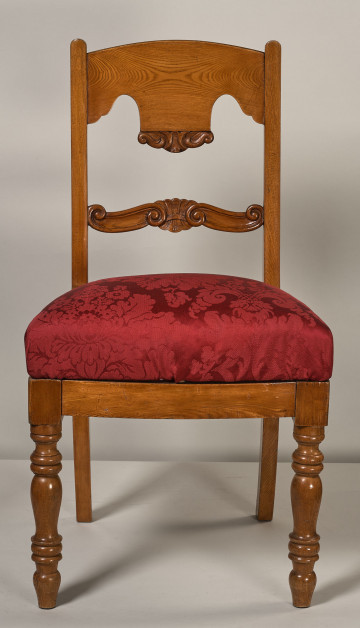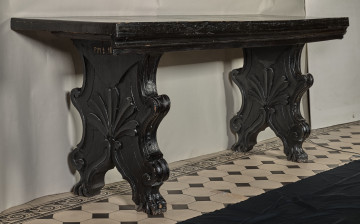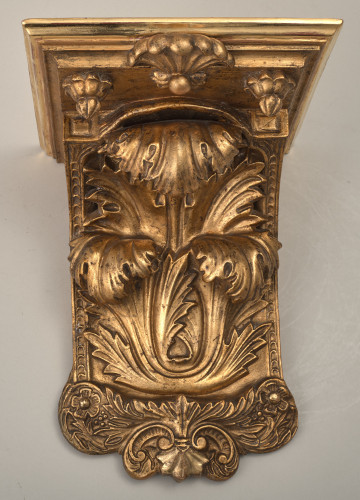
Eclectic chair
19th (?) century
Castle Museum in Łańcut
Part of the collection: Meble i wyposażenie wnętrz
Consolette, hanging shelf. The term 'console' is used for architectural supports used since ancient times, for example, in Greek and Roman architecture. The Latin word 'consol', meaning comfort or support, has spread to many European languages. In France, the term 'console', meaning support or bracket, began to be applied to the narrow or semicircular decorative tables and wall pedestals introduced at the end of the 17th c. They served to display sculptures, clocks, and similar crafts used to decorate representative interiors. Consoles, popularised in European interior architecture during the 18th c., took shapes and forms conforming to the prevailing fashion, using characteristic stylistic details. For greater stability, they were usually affixed to the walls against which they stood. Smaller and lighter decorative brackets, hung directly on the wall and serving as a small shelf began to be called consolettes; they could be made of wood, plaster, or porcelain, carved or gilded. The wall-adjacent side of the console or consolette remained raw, unworked, unlike the sides facing the viewer. The presented wooden consolette is a pair for S.1074MŁ. It was acquired by the Łańcut Castle Museum from the Lubomirski palace in Przeworsk after the Second World War. The shelf, decorated with a carved acanthus leaf pattern, resembles an architectural bracket and has the typical 19th-century features of imitating historical styles. Edited by Teresa Bagińska-Żurawska https://orcid.org/0000-0002-9243-3967
Author / creator
Dimensions
height: 28 cm, width: 21 cm
Object type
Furniture and interior fittings
Technique
gilding, woodcarver
Material
lime tree wood
Creation time / dating
Creation / finding place
Owner
Castle Museum in Łańcut
Identification number
Location / status

19th (?) century
Castle Museum in Łańcut

19th (?) century
Castle Museum in Łańcut

19th (?) century
Castle Museum in Łańcut
DISCOVER this TOPIC
National Museum in Szczecin
DISCOVER this PATH
Educational path